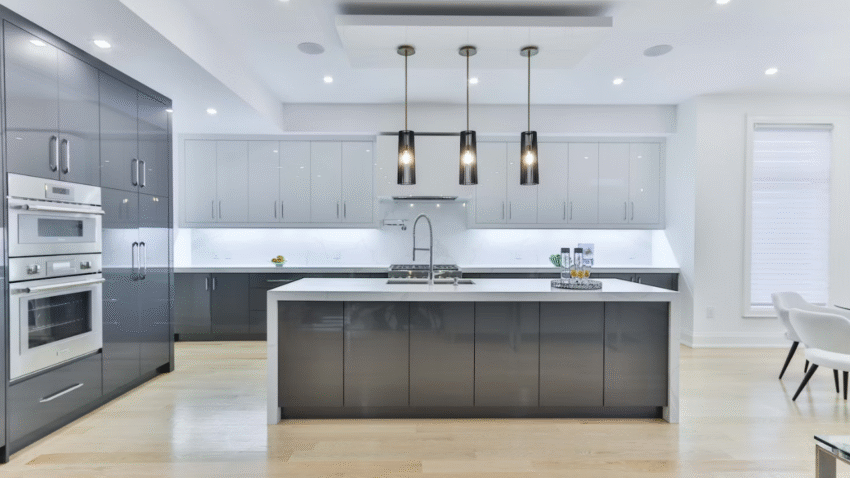Introduction
Want warm, home-cooked meals without spending hours in the kitchen? A slow cooker is the ultimate time-saving appliance, perfect for busy households. But just tossing ingredients in and turning it on isn’t always enough to get the best results. In this guide, you’ll learn how to use a slow cooker effectively—from layering ingredients to timing meals and boosting flavor. With the right techniques, your slow cooker can become your favorite kitchen ally.
Why Slow Cooker Know-How Matters in the Kitchen
Slow cookers are fantastic for cooking meals low and slow, bringing out deep flavors while saving you time and energy. But misusing this tool can lead to bland, overcooked, or watery dishes. Using your slow cooker correctly improves:
- Meal prep convenience and hands-free cooking
- Flavor development in stews, soups, and meats
- Kitchen efficiency—just set it and forget it
- Versatility, from breakfast to dinner and even dessert
By mastering this tool, you’ll elevate everything from simple chilis to complex roasts with minimal effort.
Step-by-Step Guide to Using a Slow Cooker Effectively
Follow these proven steps to make the most of your slow cooker every time.
1. Know Your Slow Cooker’s Settings
Most slow cookers come with three main settings:
- Low: Cooks food slowly over 6–8 hours
- High: Cooks faster over 3–4 hours
- Warm: Maintains heat without cooking further
Kitchen Tip: Cooking on low generally produces the best texture and flavor, especially for meats and stews.
2. Preheat Your Slow Cooker (Optional but Helpful)
Preheating your slow cooker for 15–20 minutes before adding ingredients helps maintain consistent cooking temperatures—especially useful for meats and thick dishes.
Reminder: While not required, this small step can improve your final results.
3. Layer Ingredients the Right Way
The way you layer food affects how evenly it cooks:
- Tough root vegetables (like carrots and potatoes) go on the bottom
- Proteins (like chicken or beef) go in the middle
- Lighter veggies and seasonings go on top
Note: Always cut ingredients into uniform pieces for even cooking.
4. Don’t Overfill the Pot
Only fill your slow cooker half to three-quarters full. Overfilling can lead to uneven cooking and spillovers, while underfilling may cause food to burn.
Kitchen Tip: For soups or stews with a lot of liquid, leave at least an inch of space at the top to prevent bubbling over.
5. Use Less Liquid Than Usual
Unlike stovetop or oven cooking, slow cookers trap moisture and require less added liquid.
- Reduce broth, water, or wine amounts in recipes by about 25–50%
- Vegetables and meats release liquid during cooking
Pro Tip: If your dish ends up too watery, remove the lid for the last 30–60 minutes to help it reduce.
6. Don’t Peek or Stir Too Often
Every time you lift the lid, heat escapes—adding 15–20 minutes of extra cooking time each time.
Reminder: Only check your meal near the end of the cooking time unless a recipe tells you otherwise.
7. Add Dairy, Pasta, and Fresh Herbs Last
Some ingredients don’t hold up well to long cooking:
- Dairy (cream, cheese, yogurt) can curdle—add near the end
- Pasta and rice should be partially or fully cooked before adding
- Fresh herbs lose flavor—add just before serving
Kitchen Tip: Use dried herbs at the beginning for slow flavor development.
8. Use the Right Cuts of Meat
Tougher, cheaper cuts (like chuck roast, pork shoulder, or chicken thighs) become tender and juicy in a slow cooker. Lean cuts (like chicken breast) can dry out unless cooked carefully.
Reminder: Trim excess fat to avoid greasy sauces or soups.
Common Mistakes to Avoid
Avoid these common slow cooker missteps for better meals every time.
Mistake 1: Adding Too Much Liquid
Solution: Use less liquid than stovetop recipes call for—ingredients will release their own juices.
Mistake 2: Overcooking Lean Meats
Solution: Choose the right meat cuts or reduce cooking time for delicate proteins.
Mistake 3: Lifting the Lid Too Often
Solution: Trust the process. Only open the lid toward the end of cooking.
Mistake 4: Using the Wrong Size Cooker
Solution: Match the recipe size to your slow cooker capacity. A half-empty pot may overcook food.
Mistake 5: Not Browning Meat First (When Needed)
Solution: Searing meat in a skillet before adding to the slow cooker boosts flavor and texture.
Extra Tips & Kitchen Hacks
Use these bonus strategies to take your slow-cooked meals to the next level.
Tip 1: Use a Liner for Easy Cleanup
Slow cooker liners (available in most grocery stores) make cleanup quick and painless—especially after sticky or cheesy dishes.
Tip 2: Prep Ingredients the Night Before
To save time in the morning, chop veggies, portion out spices, and refrigerate everything overnight. Just dump and go the next day.
Tip 3: Double Your Recipe for Meal Prep
Most slow cooker meals freeze well. Make a double batch and freeze half for another week.
Next Task: After mastering slow cooking, try batch-cooking grains or beans to use throughout the week.
Conclusion
A slow cooker can be your best friend in the kitchen—if you know how to use it right. By layering ingredients properly, using less liquid, and resisting the urge to lift the lid, you’ll get flavorful, perfectly cooked meals with minimal effort. Avoid common mistakes and incorporate a few pro tips to make every dish a success. Whether it’s hearty stews or creamy curries, your slow cooker is ready to make home cooking easier than ever.
Bookmark this guide to master slow cooking and simplify your kitchen routine!
